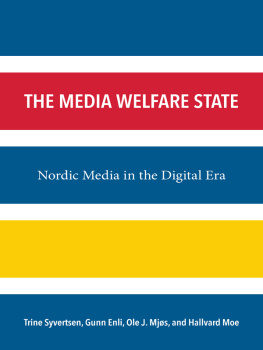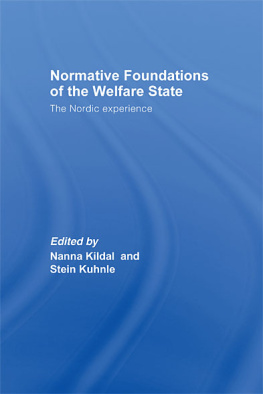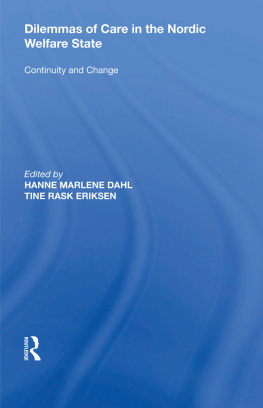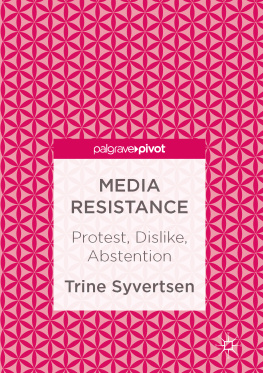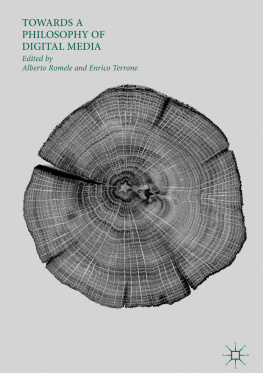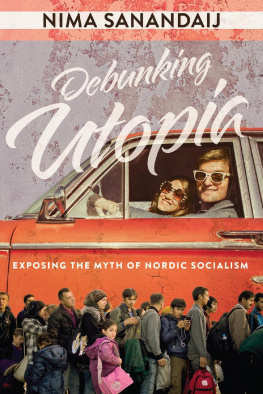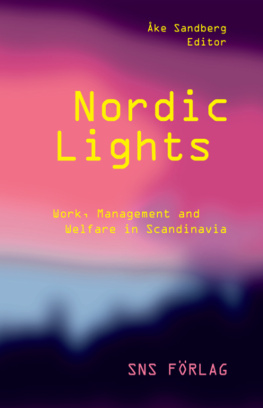Syvertsen Trine - The Media Welfare State: Nordic Media in the Digital Era
Here you can read online Syvertsen Trine - The Media Welfare State: Nordic Media in the Digital Era full text of the book (entire story) in english for free. Download pdf and epub, get meaning, cover and reviews about this ebook. year: 2018, publisher: The University of Michigan Press, genre: Politics. Description of the work, (preface) as well as reviews are available. Best literature library LitArk.com created for fans of good reading and offers a wide selection of genres:
Romance novel
Science fiction
Adventure
Detective
Science
History
Home and family
Prose
Art
Politics
Computer
Non-fiction
Religion
Business
Children
Humor
Choose a favorite category and find really read worthwhile books. Enjoy immersion in the world of imagination, feel the emotions of the characters or learn something new for yourself, make an fascinating discovery.
- Book:The Media Welfare State: Nordic Media in the Digital Era
- Author:
- Publisher:The University of Michigan Press
- Genre:
- Year:2018
- Rating:5 / 5
- Favourites:Add to favourites
- Your mark:
- 100
- 1
- 2
- 3
- 4
- 5
The Media Welfare State: Nordic Media in the Digital Era: summary, description and annotation
We offer to read an annotation, description, summary or preface (depends on what the author of the book "The Media Welfare State: Nordic Media in the Digital Era" wrote himself). If you haven't found the necessary information about the book — write in the comments, we will try to find it.
The Media Welfare State: Nordic Media in the Digital Era — read online for free the complete book (whole text) full work
Below is the text of the book, divided by pages. System saving the place of the last page read, allows you to conveniently read the book "The Media Welfare State: Nordic Media in the Digital Era" online for free, without having to search again every time where you left off. Put a bookmark, and you can go to the page where you finished reading at any time.
Font size:
Interval:
Bookmark:
 Page i Page ii
Page i Page ii Joseph Turow
SERIES EDITOR
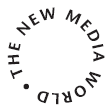
Broadcasting, Voice, and Accountability: A Public Interest Approach to Policy, Law, and Regulation
Steve Buckley, Kreszentia Duer, Toby Mendel, and Sen Siochr, with Monroe E. Price and Marc Raboy
Owning the Olympics: Narratives of the New China
Monroe E. Price and Daniel Dayan, editors
The Hyperlinked Society: Questioning Connections in the Digital Age
Joseph Turow and Lokman Tsui, editors
When Media Are New: Understanding the Dynamics of New Media Adoption and Use
John Carey and Martin C. J. Elton
Making News at The New York Times
Nikki Usher
The Media Welfare State: Nordic Media in the Digital Age
Trine Syvertsen, Gunn Enli, Ole J. Mjs, and Hallvard Moe
DIGITALCULTUREBOOKS, an imprint of the University of Michigan Press, is dedicated to publishing work in new media studies and the emerging field of digital humanities.
Page iiiNORDIC MEDIA IN THE DIGITAL ERA
Trine Syvertsen, Gunn Enli, Ole J. Mjs, and Hallvard Moe
The University of Michigan Press
ANN ARBOR
Copyright by Trine Syvertsen, Gunn Enli, Ole J. Mjs, and Hallvard Moe 2014 Some rights reserved

This work is licensed under the Creative Commons Attribution-Noncommercial-No Derivative Works 3.0 United States License. To view a copy of this license, visit http://creativecommons.org/licenses/by-nc-nd/3.0/ or send a letter to Creative Commons, 171 Second Street, Suite 300, San Francisco, California, 94105, USA.
Published in the United States of America by
The University of Michigan Press
Manufactured in the United States of America Printed on acid-free paper
Printed on acid-free paper
2017 2016 2015 2014 4 3 2 1
A CIP catalog record for this book is available from the British Library.
DOI: http://dx.doi.org/10.3998/nmw.12367206.0001.001
Library of Congress Cataloging-in-Publication Data
Syvertsen, Trine.
The media welfare state : Nordic media in the digital era / Trine Syvertsen, Gunn Enli, Ole J. Mjs, and Hallvard Moe.
pages cm. (The new media world)
Includes bibliographical references and index.
ISBN 978-0-472-07215-6 (hardcover : alk. paper) ISBN 978-0-472-05215-8 (pbk. : alk. paper) ISBN 978-0-472-12031-4 (e-book)
1. Mass mediaSocial aspectsScandinavia. 2. Digital mediaSocial aspectsScandinavia. 3. Public broadcastingScandinavia. 4. Mass media policyScandinavia. 5. Mass media and cultureScandinavia. I. Enli, Gunn, 1970 II. Mjos, Ole J., 1970 III. Moe, Hallvard. IV. Title.
P92.S34.S97 2014
302.230948dc23
2014002777
Page v Page viThis is a cowritten monograph, and the authors have all taken part in developing the overall framework and main points of each chapter. Still, there has been a division of labor. Ole J. Mjs had the original idea for the book, developed the initial synopsis together with Hallvard Moe, and coordinated the work from start to finish. He is the primary author of .
We are thankful for the commitment and enthusiasm of Joseph Turow, the book series editor, and Tom Dwyer, our acquisitions editor at the University of Michigan Press. We would also like to thank Andrea Olson for coordinating the copyediting of the manuscript.
We are grateful to the two anonymous reviewers, whose critique and suggestions improved the overall quality of the book. Many have commented on and discussed unfinished chapters and papers, and we particularly wish to thank Espen Ytreberg, Vilde Schanke Sundet, Kari Karpinnen, and Henrik Sndergaard for valuable feedback. Thanks to Lene Vibeke Hansen and Chimen Darbandi for much appreciated practical assistance. Thanks to the Department of Information Science and Media Studies, University of Bergen, for financial support. We also wish to express our thanks to Maury Saslaf for proofreading.
We sincerely hope that the book will be useful to students of Nordic media. Many students have read and discussed preliminary versions of the book. We would like to extend our warm thanks to students attending Nordic media and summer school courses at the University of Oslo and courses on the Norwegian media system at the University of Bergen. We alone bear the responsibility for the books content, but we have been inspired and encouraged by your helpful comments along the way.
Page viii Page 1The Nordic region is the northernmost part of Europe, consisting of Norway, Sweden, Finland, Denmark, and Iceland, with a total population of approximately 25 million. It is known for the Nobel Prize, furniture retailer giant IKEA, childrens favorite LEGO, pop groups such as ABBA and A-ha, oil riches, salmon, fjords, saunas, and snowy mountains. But the states of this region are also known throughout the world for their peculiar way of organizing their societies. Taken together, the social and economic systems in these countries have become known as the Nordic Model, a welfare state system that aims at universal rights within societies with comparatively small class, income, and gender differences.
Within the Nordic region, a distinct organization of media and communications has evolved throughout the analogue era. A publicly supported but independent press has boasted the worlds highest readership figures; publicly funded and owned broadcasters have contributed to building national identity and strived for enlightenment while maintaining a mass audience in the face of intense competition, and securing the entire populations access to high-speed Internet services has been a consensual political goal. Far-reaching state interventions and support schemes have been combined with a strong adherence to the principle of freedom of speech. The outcome is an adaptive public media sector with a high degree of legitimacy existing alongside domestically, and to some extent globally, successful commercial media and communication companies.
The existence of distinct and common features in Nordic media and communications has been pointed out in both academic and industry studies (see, e.g., Hallin and Mancini 2004; World Economic Forum 2012, xiii; Economist Intelligence Unit 2010, 2). Yet, very few studies, and this is particularly true for studies emerging from within the region, take a genuine Nordic perspective. To the degree that studies are concerned with more than one Nordic country Page 2 or media sector the emphasis is just as much on national differences as on similarities within the region. Furthermore, since a Nordic perspective is rare, it is seldom asked whether the media and communication systems in the Nordic region develop along a different path than in other countries or regions. There is a tendency to assume that the strong transformative forces that impact on all media systems, such as globalization, marketization, and fragmentation, hit Nordic systems with broadly the same strength as in larger and more dominant countries.
We deny neither that there are great variations within and between Nordic countries, nor that the challenges to traditional media and regulatory models have been massive over the last decades. In several studies we ourselves have detailed how the media sector has been globalized (Mjs 2010a, 2012), how competition policy and industrial policy have come to play a more important role in the field of media (Syvertsen 2004; Storsul and Syvertsen 2007; Moe 2012c), how the relationship between the state and public service broadcasters is changing due to convergence and competition (Moe 2009, 2010), and how a range of commercial reality formats have invaded Nordic screens (Enli 2008; Enli and McNair 2010). Yet, the main point of this book is not to emphasize how traditional features and principles of regulation are being undermined. Instead, we aim to test the argument that continuity is just as important as change within Nordic media. We hope to show that although both principles and practices of media policy and regulation are modified and changed, such principles and practices are also to a large degree reaffirmed, sustained, and strengthened in the digital age.
Font size:
Interval:
Bookmark:
Similar books «The Media Welfare State: Nordic Media in the Digital Era»
Look at similar books to The Media Welfare State: Nordic Media in the Digital Era. We have selected literature similar in name and meaning in the hope of providing readers with more options to find new, interesting, not yet read works.
Discussion, reviews of the book The Media Welfare State: Nordic Media in the Digital Era and just readers' own opinions. Leave your comments, write what you think about the work, its meaning or the main characters. Specify what exactly you liked and what you didn't like, and why you think so.

